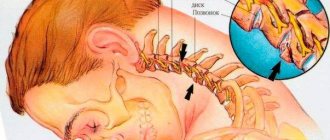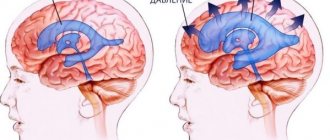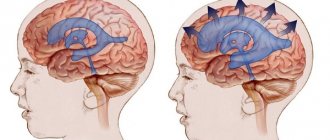Intracranial pressure (ICP) is the force with which the brain fluid inside the skull presses on its walls. Its change significantly affects the state of human health. With pronounced deviations of the level of intracranial pressure from the norm, characteristic manifestations of the nervous system are observed. Low or high levels of intracranial pressure can even lead to death. Therefore, if this pathology is suspected, it is extremely necessary to measure intracranial pressure.
Increased intracranial pressure is a dangerous condition that every person has encountered. Pathology occurs both in children, including newborns, and in adults. It was noted that females are more susceptible to the disease than males.
In some cases, the symptoms of increased ICP do not cause any concern. This is what, in most cases, causes sad consequences. Because of this, you need to be aware of this issue, know the symptoms of the pathology, how you can measure intracranial pressure and ways to normalize it.
Physiology of cerebral fluid circulation processes
Various factors can lead to increased pressure in the skull. However, the main reason for this phenomenon is a disruption of the normal outflow of cerebrospinal fluid (CSF) from the skull.
To better understand the cause of this condition, it is necessary to understand the anatomy of the brain and some of the physiological processes of its functioning.
Contrary to the popular belief that the skull contains many neurons and nothing else, its structure is significantly different from that. More than a tenth of the specific mass of the brain is cerebrospinal fluid. Its second name is liquor.
Its main quantity is located in the area of the cerebral ventricles. They are located in the very center of the organ substance. Part of the volume of brain fluid circulates within the space under the arachnoid mater and the pia mater of the brain. In addition, part of the cerebrospinal fluid is located in the spinal cord canal.
The list of functions of cerebrospinal fluid is wide. It protects brain tissue from mechanical damage to the cranial bones, ensures a normal balance of water and electrolytes, and removes harmful substances and toxins from the tissues.
It is the content of brain fluid that provides the level of cerebral pressure. The vast majority of cerebrospinal fluid is produced in the area of the cerebral ventricles (produced by them). The remaining amount is formed from blood tissue that circulates in the brain. Complete renewal of the cerebrospinal fluid is observed within a week.
The level of cranial pressure is measured by the pressure of mercury or water column. The unit of measurement is a millimeter at the level of one of the indicated pillars. That is, the results of the study will look like X mmHg. Art. or X mm water. Art.
The normal level in adults is between three and fifteen millimeters of mercury. If we consider these data, they indicate how many millimeters the level of cerebral fluid pressure is higher than the atmospheric level.
For a child this value is slightly less.
When the amount of cerebrospinal fluid increases, intracranial pressure also increases.
When intracranial pressure increases to more than thirty millimeters of mercury, irreversible damage to brain tissue and death are observed. That is why doctors need to know the level of ICP and how to determine intracranial pressure, and ordinary people need to know about the characteristic symptoms of a change in its normal level.
The question naturally arises: “How to measure intracranial pressure at home?” The answer is simple - no way. It is impossible to measure it at home. To do this, you need to master a special technique and have the appropriate equipment. In addition, the obtained indicators must be interpreted correctly, and only a doctor can do this.
Outside a medical institution, one can only suspect a pathology by the presence of characteristic signs.
How to check intracranial pressure in a child
Intracranial hypertension can also occur in children. The diagnosis of ICP is often made in newborns based on symptoms:
- frequent crying for no reason;
- protruding and tense fontanel;
- head size is larger than normal;
- strabismus.
Intracranial pressure in older children manifests itself as:
- vomit;
- headache;
- fatigue;
- increased excitability;
- convulsions.
These signs do not always indicate cerebral hypertension, but if they bother you at the same time, then you need to immediately examine the child. The doctor will tell you how to measure intracranial pressure in childhood and using what method. For children whose fontanel has not yet become overgrown, neurosonography or ultrasound of the brain is prescribed. The procedure is completely safe and is indicated for newborns from birth. Children as young as one year old are referred for echoencephalography. The device will help track the level of pulsation of brain vessels.
Symptoms of increased intracranial pressure
In case of increased intracranial pressure, a specific clinical picture (pathological picture) is observed. This pathological condition is characterized by:
- the presence of headaches that cannot be relieved by taking painkillers (they will increase in proportion to the increase in pressure);
- severe dizziness;
- impaired coordination of movements;
- presence of visual impairment;
- impaired memory and orientation in space;
- excitement or vice versa drowsiness;
- unstable nature of blood pressure in the arteries (excessive decrease or increase);
- feeling of nausea (but may be absent);
- strengthening of the gag reflex, up to gushing vomiting;
- adynamia;
- rapid loss of strength;
- increased sweating;
- presence of chills;
- mood swings (can quickly move from irritability to complete apathy);
- hyperesthesia of the skin;
- pain along the spinal column;
- respiratory impairment;
- the appearance of shortness of breath;
- inability to perform muscle movements with preserved sensitivity.
In the case when one of the listed symptoms occurs, it is too early to judge an increase in ICP, because often the listed signs also occur with other ailments. But a combination of several symptoms is a reason to go to the hospital and, if the diagnosis is confirmed, to be admitted to a medical facility.
Most often, this pathology causes pain in the head. Its severity increases in parallel with the pressure level. What distinguishes the picture from the manifestations of migraine is that in this case the pain occurs in the entire head, and not in one side of it. Increased pressure in the cranial cavity usually occurs in the morning and at night. Head movements, coughing, and sneezing can increase the pain. No painkillers can relieve the discomfort.
Another characteristic sign of increased intracranial pressure is the appearance of vision problems. Patients see double, they cannot clearly see objects, their peripheral vision decreases, paroxysmal blindness is observed, people complain of the appearance of fog before their eyes, and the response to light stimuli is noticeably reduced. This is due to compression of the optic nerve.
Due to frequent increases in pressure, the eyeball changes its shape. There are cases when, due to severe protrusion of the eyes, patients are unable to close their eyelids. Blue circles are often observed in the orbital area. This is due to the overflow of the venous vessels in this area.
If we consider nausea, it is caused due to an increase in the pressure of the cerebrospinal fluid on the nerves leaving the brain.
Vomiting is considered dangerous. At low pressure values, it is preceded by nausea, but at a significant increase, this does not happen. After emptying the stomach, patients do not feel better. Sometimes there are phenomena of vomiting like a fountain. There is no other way to stop it except to reduce the pressure.
You need to know the fact that a short-term increase in blood pressure can also be observed in healthy individuals. This is caused by coughing, sneezing, physical activity, stress, and so on. But in this case, the ICP quickly reaches the desired level. If this does not happen, we can talk about chronic pathology.
Non-invasive measurement methods
To measure intracranial pressure, adults need to visit a neurologist. The specialist will interview the person about the symptoms and then make a referral to see other doctors.
Symptoms may indicate the presence of various diseases that can affect blood vessels, heart and central nervous system. You should definitely consult an ophthalmologist, because this specialist will need to examine the fundus of the eye to assess the condition of the blood vessels.
In the event that doctors have found signs that indicate increased ICP, they will need to measure it. As already mentioned, this can only be done in a special institution, because professional equipment will be required.
If a person is in normal condition, non-invasive methods for determining pressure can be used for him. They are completely safe and do not cause pain. However, they are not highly accurate, so they raise doubts among experts.
Methods:
- Duplex scanning of arteries . This procedure is designed to assess the condition of the blood flow and vascular system. The procedure does not take more than 10 minutes.
- Rheoencephalography . The skull area will be exposed to electric current using special equipment. It will allow you not only to assess the condition of the organ, but also to measure pressure.
- Magnetic resonance imaging. The procedure takes approximately 40 minutes, during which time the person will be in a special capsule. Using MRI, you can evaluate the state of the brain and identify the presence of pathologies. It will also be possible to roughly determine whether the patient is suffering from ICP.
- Spinal tap . The procedure is unpleasant, because a needle is inserted into the person’s spine, on which a pressure gauge is attached. Thanks to this procedure, you can not only find out the amount of liquid, but also information about the pressure. Actions are carried out in stationary conditions.
- Otoacoustic method . The doctor will need to look at the location of the eardrum. If there are deviations from the norm, then this indicates high intracranial pressure.
Measuring intracranial pressure using these methods is quite difficult, because you cannot be sure of the accuracy of the results. The doctor will decide which method to choose after assessing the patient’s condition. The main condition is to strictly follow the specialist’s recommendations if you want to solve your health problems.
Manifestations in babies
The baby is not able to communicate the unpleasant sensations that he experiences, so parents and medical personnel have to navigate by indirect symptoms. The presence of pathology can be indicated by:
- cry;
- sleep disorders;
- lethargy;
- baby's refusal to eat;
- presence of vomiting;
- the appearance of seizures;
- involuntary eye movements;
- the presence of a swollen and pulsating fontanel;
- enlargement of the head (in medicine called hydrocephalus);
- violation of muscle tone (some muscle groups may be relaxed, while others are tense);
- the appearance or strengthening of the subcutaneous vascular network on the head.
Contrary to popular belief, nosebleeds, stuttering, and startling during sleep are usually not signs of this pathological condition.
Understanding the cause of such phenomena can be difficult, so you have to resort to instrumental examination methods.
How is this phenomenon diagnosed?
So how do you find out intracranial pressure if it is elevated? To do this, medicine has several methods at its disposal: direct and indirect methods.
In the first case, complex methods that require sterile conditions and special instruments are used for determination. But the main condition is that the doctor has the appropriate qualifications. The essence of such techniques comes down to puncturing (puncture) the dura mater and installing a catheter into the area of cerebrospinal fluid circulation. After this, it is necessary to collect cerebrospinal fluid to determine the possible cause of the pathological phenomenon. There are devices that allow you to measure pressure directly in the spinal canal.
In severe cases, there is no need to check the pressure instrumentally; if it increases significantly, you can find out the situation visually: liquor will flow from the puncture area, and not drip, as is normally observed.
The puncture can also be performed in the area of the cistern magna, which is located in the lower part of the back of the head. Today they try not to resort to this method, due to its complexity and danger for the patient.
A distinctive result of direct methods of checking intracranial pressure is that they are also methods of treating pathology. When the amount of cerebrospinal fluid decreases, its pressure naturally decreases. But you need to be especially careful when carrying out such manipulation. A rapid decrease in cerebrospinal fluid pressure leads to the death of the patient due to wedging of the brain matter into the large foramen of the skull.
The use of these techniques can lead to a number of other complications. For this reason, indirect methods for determining the level of ICP are becoming increasingly common.
How then is intracranial pressure measured in adults and children using the indirect method? Measurement with their help is based on identifying manifestations characteristic of pathology in brain tissue.
What are these methods? This:
- the use of ultrasound examination (ultrasound);
- magnetic resonance imaging (MRI);
- CT scan.
Signs that help identify the disease include:
- changes in the size of the cerebral ventricles;
- presence of edema;
- change in the distance between the meninges;
- presence of hemorrhages;
- violation of the configuration of brain structures;
- divergence of cranial sutures.
The task is greatly simplified by the use of electroencephalography, which is used to determine the activity of brain regions. And the use of Doppler mapping makes it possible to identify places where blood flow is disrupted.
A simple and at the same time informative way to make a diagnosis is to examine the fundus. It allows you to make a diagnosis before signs of the disease appear, and is an excellent way to monitor the patient’s condition.
If someone is looking for a way to check intracranial pressure at home, they need to remember that this cannot be done at home.
What is intracranial pressure, its norm and the essence of the concept
Pressure inside the skull is created in its box by parenchyma, liquor fluid and blood moving through the vessels. There are many of them located there, and they, like a web, envelop the brain. The sum of the indicators of these tissues gives the overall result. Tension inside the skull can increase or decrease, causing a number of unpleasant and dangerous symptoms, as well as deteriorating quality of life.
In cerebral hypertension, due to impaired outflow, the cells swell and become overfilled with cerebrospinal fluid. As a result of this condition, the brain increases in size and puts pressure on the walls of the skull.
This syndrome accompanies various diseases, so intracranial pressure rarely acts as an independent pathology, and it must be treated in complex therapy with the underlying disease.
If the ICP rises or falls to a slight extent, then the state of health will most likely not change, but with severe disturbances, unpleasant signs of deterioration in state of health occur.
Intracranial pressure is measured in a calm environment, the norm in different age categories is as follows:
- in adults and adolescents over 15 years old - 3-15 mm Hg. Art.;
- in childhood - 3-7 mm Hg. Art.;
- in babies in the first 12 months of life - 1.5-6 mm Hg. Art.
It should be noted that during physical activity or involuntary tension (when sneezing, coughing, singing, screaming, and similar situations), intracranial pressure may rise for a short time. In these cases, the permissible norm is 60 mm Hg. Art. This increase is natural and does not have any harmful consequences for people.
In contrast to the physiological pressure jump, intracranial hypertension can be caused by a number of diseases, and the indicator can reach a value of 70 mmHg. Art. and higher. Typically, the patient’s condition changes gradually, so for a long period a person is able not to feel it due to compensation mechanisms. At one point, the increasing ICP still begins to make itself felt.
Why does it happen?
The causes of this condition may be:
- inflammation of the brain and its membranes;
- received head injuries;
- hypertonic disease;
- endocrinological disorders;
- pathologies of the skeletal system (for example, the presence of osteochondrosis of the neck);
- neoplasms in the head;
- helminthiases.
Much less often, the characteristic clinical picture is caused by diseases that do not directly affect the head.
Certain medications can increase pressure in the skull. For example, glucocorticosteroids, some drugs from the group of antibiotics, hormonal contraception.
Invasive methods - video
It is quite rare to decide to measure blood pressure using invasive methods, because they can cause injury and are generally dangerous to health. They are carried out only for adults who are in a hospital. The hospital must have the necessary equipment in order to carry out the procedure.
Doctors prescribe invasive methods only when it is important to accurately determine the indicators of intracranial pressure . Extreme cases include situations where there is brain injury and a threat to life. Children are not allowed to undergo invasive procedures to change ICP, because this is quite life-threatening.
What are the measurement methods:
- Epidural . In this case, a sensor is inserted into the skull area, which will reach the side of the ventricle. With its help you can find out the exact indicators.
- Subdural . A hole will need to be made in the skull, and the doctor will place a special screw through it. Thanks to it, you can see the pressure level and, if necessary, lower it. After the indicator returns to normal, the screw can be removed.
- Intraventricular catheter . The procedure uses a needle and places it in the spinal canal. Liquid will flow through it, which needs to be collected in a pressure gauge. The specialist will use special calculation methods to understand what kind of intracranial pressure a person has. The disadvantage of this method is that there is a possibility of infection in the skull area.
As you can understand, these methods are not easy and publicly available. Therefore, they need to be used in a situation where it is extremely necessary to know the indicators, as well as normalize them. If a person is healthy, then invasive methods will not be used for him.
Non-invasive methods will be used to measure intracranial pressure. Although they are not absolutely accurate, they do not harm health.
Therapy
Before starting any treatment, you must undergo all examinations necessary to make a diagnosis.
Therapy for the described condition, first of all, comes down to eliminating the primary pathology. However, symptomatic treatment is also very important. It is represented by surgical and conservative methods.
Conservative ones mainly come down to taking medications to lower blood pressure and enhance the processes of blood outflow from brain structures.
First of all, diuretics are used (the effect of intravenous administration of Furosemide quickly appears). In the presence of edema, in addition to the medications listed, medications from the group of steroidal anti-inflammatory drugs help to remove it. Drugs are prescribed to eliminate vasospasm, nootropics, and drugs that stimulate metabolism.
Physical therapy and physiotherapeutic procedures, massages are indicated.
If the disease, even after treatment, progresses, it is necessary to resort to surgical treatment methods.
You should not self-medicate or resort to traditional medicine. This can significantly harm your health in this case.











